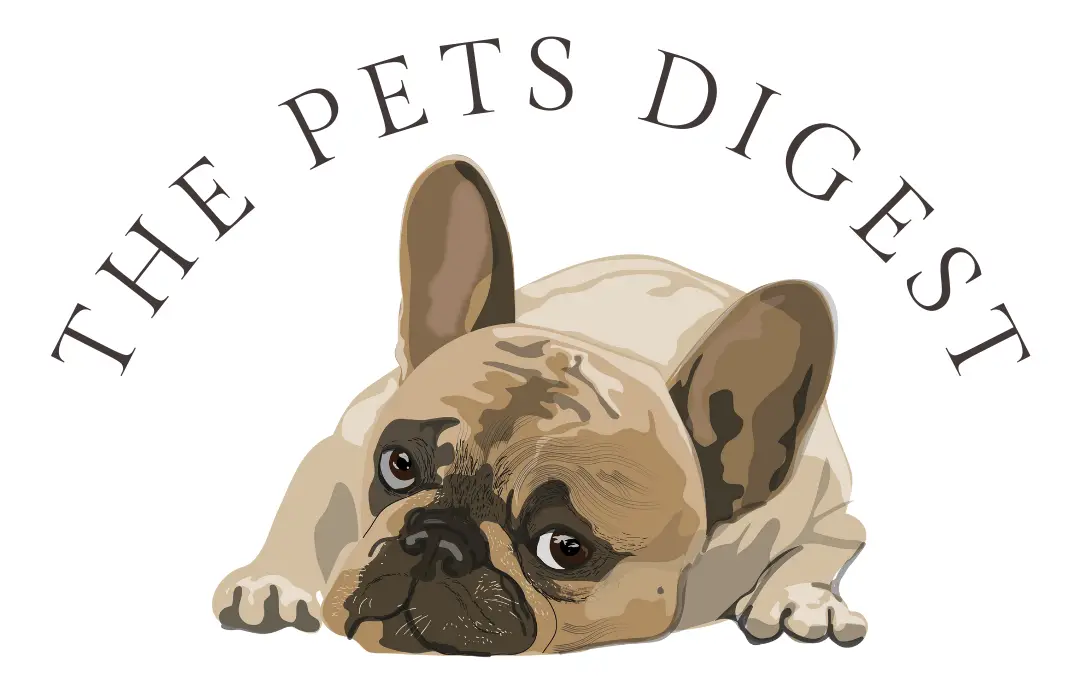Because many pet owners are now seeing the benefit of feeding their cats and dogs the best treats the pet treat business is a fairly profitable endeavor.
As pet owners that want healthier options for their cats and dog than what they are finding on the shelves, they are starting to make their own treats and selling them to other pet owners that want the highest quality treats for their pets.
Should you start a dog treat business? Should you open a ‘catery’ (cat bakery)? Continue reading to determine if the pet food/treat business is something you would like to delve into and what steps you should take

What is legally considered pet food?
For animals, the Food and Drug Administration Center for Veterinary Medicine (CVM) regulates two classes of products: food or drugs.
Most state pet food regulations have four categories of pet foods: snacks & treats; intermittent or supplemental pet foods; complete & balanced pet foods and special purpose products.
Let’s look at what the government considers pet food
Pet food is a subset of general animal feed and is defined as any commercial feed prepared and distributed for consumption by dogs or cats. Per the AAFCO the following constitute pet food:
- Complete and balanced diets/foods
- Pet treats and pet snacks
- Pet nutrient supplements (vitamins, minerals, fatty acids)
- Nutrient-added waters
- Edible chews (rawhide, hooves, pizzles) – these may be exempt from state registration and labeling requirements under specified conditions.
What is not considered pet food
- Non-nutritional supplements (herbs and botanicals, metabolites) – however, these items may be subject to regulation as drugs. The law that allows these types of ingredients in “dietary supplements” for human consumption does not apply to animal products.
FDA Standards for pet food products include that the product must be
- safe for the animal to eat
- contain no harmful stubstances
- produced under sanitary conditions
- truthfully labeled
- Canned foods must be canned according to low acid canned food regulations

1. Budget
before you do anything, you should create a budget. Write down all of the things you will need along with the cost. Luckily the start-up cost for a pet treat business are usually relatively low when compared to other businesses, however, you should factor in things like
Start-up cost:
- the cost of your ingredients (and how much you will sell them for)
- processing fees
- shipping fees (if you are selling on the internet and going to offer free shipping)
- licenses or regulation fees
- packaging
- molds
- marketing
- website hosting cost
- domain purchases
Selling fees If you are going to sell your treats at local farmers markets and fairs you should start getting the information on them ASAP so you know how much to budget for application fees
Ongoing expenses: these usually consist of purchasing additional ingredients and shipping fees
Develop realistic price points as well to determine your approximate profits
2. Determine your audience
Determine what people want from a new dog and/or cat treat company. Do a needs assessment, which can be as simple as doing a poll in a popular Facebook group.
3. Develop a Company Name and Brand
Coming up with a name for your business may prove to be the most difficult part of the entire process!
Think of what you want your business to represent, is it a fit dog brand or holistic cat brand, and ensure the name conveys this.
There are federal regulations around pet food names, so ensure you are staying within the limitations set by the FDA when creating a name, for instance, if you are going to include the word ‘organic’ in your company name you will have to follow the guideline of the National Organic Program.
Here are some tips for creating a great brand name
- Ask friends and family
- Do a poll on Facebook
- Use a Name generator like the one created by Truic
You should also come up with some brand colors and a slogan if you are going to use one. Most brands have 2-3 brand colors and four at the most.
4. Get a Website
Now that you have your name purchase the domain and start working on a website.
There are plenty of options for website hosting like Blue host and Siteground if you decide to build your own website or most business owners use a drag and drop platform like Shopify for simplicity.
5. Form a Legal Entity
Since you are starting a business for profit, you will want to start off making it official and this includes the following processes. They are in no necessary order but obtaining an EIN and social media websites are free and relatively easy to do so I would start with those.
- obtaining your EIN
- opening a business bank account – to separate your personal assets from your company’s assets
- determining if your business will function as a sole proprietorship, LLC, or a corporation (speak with a CPA)
- obtain your trademark (I would recommend waiting until you are established and know the name you have is he one you are settled on)
- get your domains
- get your social media sites
- register with your state as a business
6. Know your Regulations
Pet food, treats and supplements are highly regulated by both the federal government and the U.S states. It would be nice if there was one organization that created, maintained, approved, and enforced regulations concerning pet treat production, but unfortunately, there is not.
All states with the exception of Alaska and Nevada have their own established commercial feed laws which vary greatly, so yes this means that you will have to go to each state and learn what you can and cannot do.
Regulations on pet food focus on two main things:
- The product label (is it truthful, how are the ingredients listed etc.)
- The ingredients used (are they on the approved ingredient list, are they fit for pet consumption etc.)
Most state laws require registration of feed or pet food and some states require that your company be licensed to sell in that state. As I stated before, each state is different so some states will have a year renewal cycle and some two years, which means if you are selling in multiple states this is something you’ll want to make note of.
In Texas, for example, small package pet food is registered, and the facility is licensed. In California, a license fee per location and a license fee for each pet food manufacturing facility are required. In Iowa, the label guarantor is licensed and each small pet food package is licensed.
AAFCO
What is the state registration process like?
For most companies, the registration process consists of
- Paying a licensing fee or registratyion applicaiton fee
- The registration fee may have to be renewed annually or bi-annually and usually involves a fee for each product, whereas a licensiting fee usually covers as many products under the same brand as you have in your store
- Submitting the company contact information/ a list of products to be registered/an example of the product labels
- Submitting a Tonnage Report if necessary
Aside from your local state regulations, The United States Food and Drug Administrations Center for Veterinary Medicine also regulates pet food and treats. These regulations cover basic labeling requirements (ingredient list, net content, name, and address, statement of identity). Fortunately, there are no product registration or licensing requirements with the federal government.
However, if you are manufacturing canned pet food, you have to register your processing method with the federal government to ensure production safety.
The AAFCO is a great resource for pet treat makers and has a list of State Feed Controls
Alternatively, they have a PDF that you can download here.
7. Prep your labels
Your pet treat label is highly regulated both on a federal and a state level. The labels must have the ingredients listed in descending order of predominance by weight.
After reviewing the labels for format and content they will either be approved or not (you can usually reapply if your label is not approved after making the necessary changes). The label submitted to the regulator must be the same label that will be used in the marketplace.
When I decided to start my pet treat business I wanted to know exactly what to include on the labels so that I would be in compliance with all of the labeling requirements in all of the states. Most states have their own feed laws and regulations when it comes to labeling requirements but according to the AAFCO, if you use their model for labeling you should meet or exceed most state requirements and this is what most small pet treat companies do.
Your pet food label has 8 required items
- Brand and Product Name:
There are rules about using specific words in your dog treats/food and they are determined by the percentage of that ingredient in the product. Generally you may see the words “Beef Dog Food”, “Beef Recipe Dog Food”, “Dog Food with Beef” and “Beef Flavor Dog Food” depending on the amount of beef in a product. - Name of Species for which the pet food is intended:
This can be included in the name, such as ‘Duck Dog Treats’ and must be conspicuously designated in words on the principal display panel - Quantity Statement:
This is the net weight or net volume, and it must be expressed in the correct units - Guaranteed Analysis:
This lists the percentage of each of the nutrients in the food, it is the list of minimums and maximums listed on tthe side of dog and catfood products. To read a bit more on guaranteed analysis click here. Most pet treat companies have the guaranteed analysis done by an external laboratory as many don’t have the equipment to perform the testing in house, especially if you are just starting or run a small business - Ingredient Statement:
Ingredients must be listed in order of predominance by weight, on an “as formulated basis” - Nutritional Adequacy Statement:
This is a statement that indicates the food is complete and balanced for a particular life stage, such as growth, reproduction, adult maintenance or a combination of these, or intended for intermittent or supplemental feeding only. If you are making treats this probabaly won’t be significant for you. - Feeding Directions:
This tells consumers how much they should feed their dogs or cats by weight and how often. Feeding directions are usually optional for treats as long as they are not complete and balanced and they are labeled as snacks or treats - Name and address of manufacturer or distributor:
your companies name and address for gurantee purposes. The streeet address can be omitted but the city, state, and zip code should be shown. If someone else is making your treats you have to include verbage such as “manufactured for” or “distributed by” in front of the location listed
The AAFCO has a pet food labeling booklet for purchase on their website here.
8. Choose your ingredients

Not all ingredients that you are considering for your pet treats may be okay for use. My motto is to keep it as simple as possible and do not include any new or novel ingredients that may be considered dietary supplements.
Your ingredients should be
- Safe and appropriate for cats and dogs
- On the approved ingredients list – Federal & State officials can help you dettermine if your ingredients are on the approved list
- Listed in order of weight on the ingredients list
- Trutful of what is on the ingredients list
9. Determine where you will sell your pet food and pet treats?
Some places to sell your treats are:
- Local farmers market – most local farmers markets will want your state registration paperwork so they know you are in compliance before selling
- Over the internet – if you are selling treats over the internet you will have to register in every state you ship to (see the next section of this article)
- At a veterinarians office
- in a local store – make sure to get a break down of the percetnage you will retain to determine if this is going to be profitable for your business. It is normally a 40%/60% split
Selling pet treats over the internet
If you decide to sell your products online this would legally be considered distributing your products in every state, which means you should have your product registered in all of the states that require registration prior to offering your products for sale on your website.
If you do not want to register in all 50 states you can opt to limit your sales to specific states. If you have a Shopify store, you can restrict some products from being able to be purchased in some states, but you will have to do so state by state. You can also download an app like Better Shipping to create different shipping profiles by zipcode for products.
10. Get Insurance
You should definitely invest in obtaining business insurance to protect your company’s finances. Most new business owners start with general liability insurance but speak with a couple of different companies and agents to determine which would be best for you.
11. Start Marketing
Marketing is by far one of the most important aspects of your new business you should focus on, while it can be overwhelming you should start developing a marketing plan as soon as you can. Most new business owners are also new to the world of marketing, so this may take some research and education to learn the world of marketing. Since you are just starting, try some free promotions to start off like sharing your treats with family, friends, or Facebook groups (if they allow it).
Some common ad programs are:
- Facebook Ads
- Google Ads
- YouTube Ads
- Pinterest Ads

FAQ about starting a cat & dog treat business
- Do I need to have a professional home inspected prior to starting my treat business? No, you do not have to have your home inspected by an agency prior to making dog and cat treats at home
- If I’m selling treats on Etsy am I in compliance with the required rules and regulations? It depends, if you are shipping to a state you are registered in then yes if you are shipping to a state you are not registered or licensed in then no you are not in compliance
- Are there people that can assist me with submitting my paperwork to each state? Yes, there are agents that are knowledgeable about submitting g the proper paperwork to each state and will definitely make the entire process go a lot smoother. One company I found is TSGconsulting
- Can I use the term “veterinary recommended” on my packaging? Yes, you can if you have done a sufficient survey of veterinarians to prove this claim as true. This means more than a couple of vets should be surveyed.
- Can I use the term “veterinary approved” on my packaging? No, since veterinarians alone cannot approve labels or products, only state regulatory agencies can do this
- Can I use the term “human grade” on my pet treat label if all of my products are from the grocery store? According to the AAFCO you can use the term human grade on your label if all of the products used are fit for human consumption. Meaning you can’t mix products that are fit for human consumption and some that aren’t and still call it “human grade”.
Some great references for further research are:


























































































































